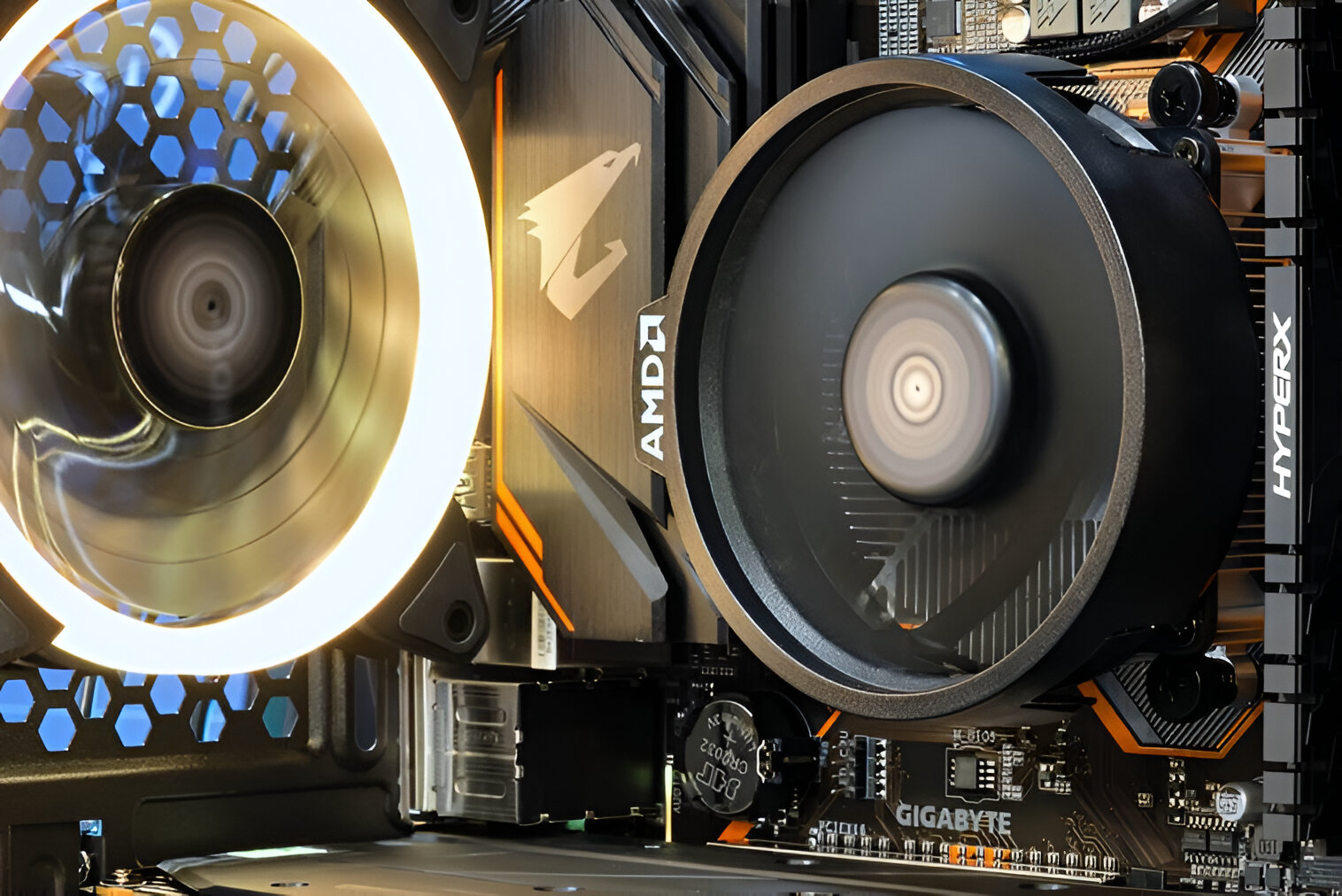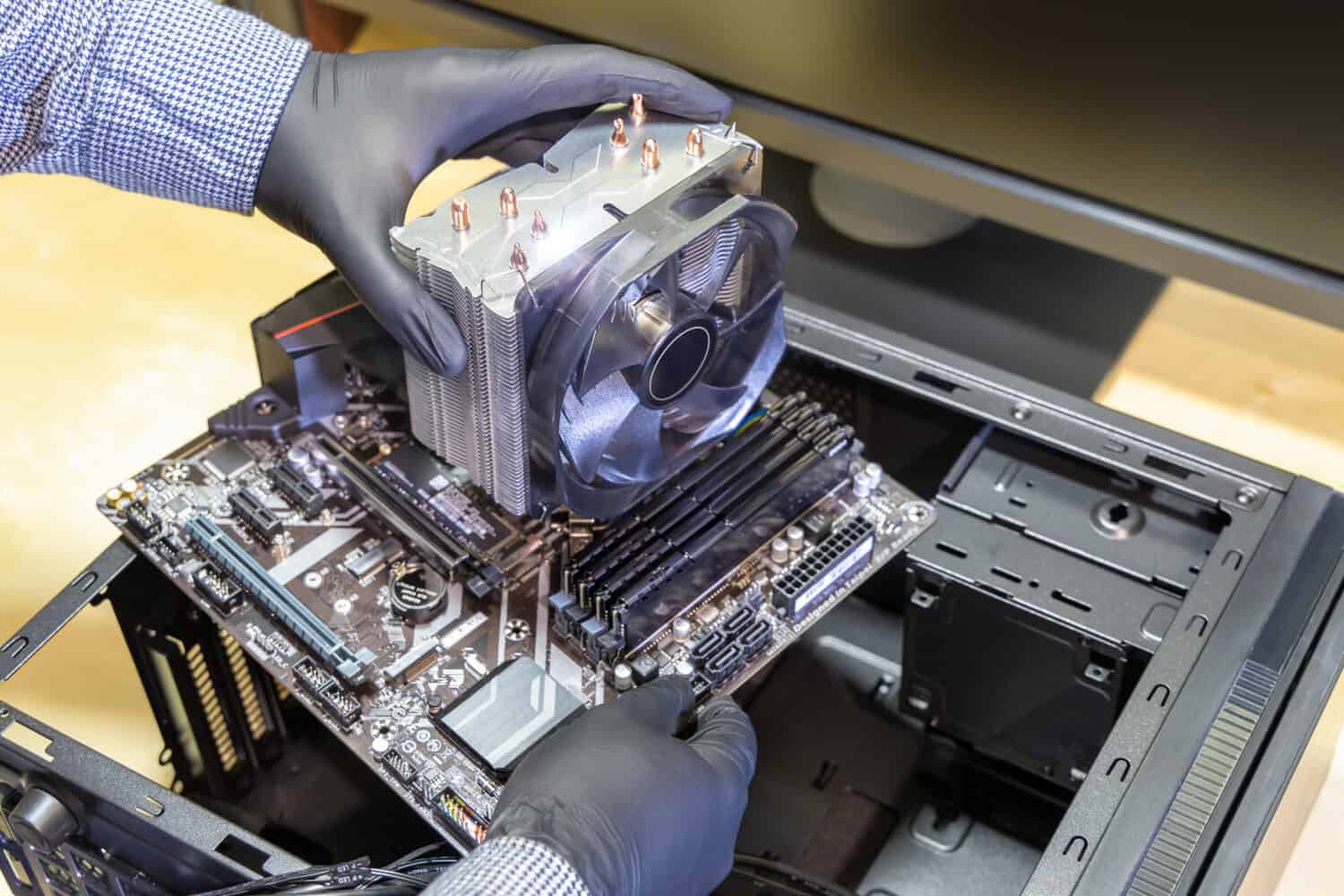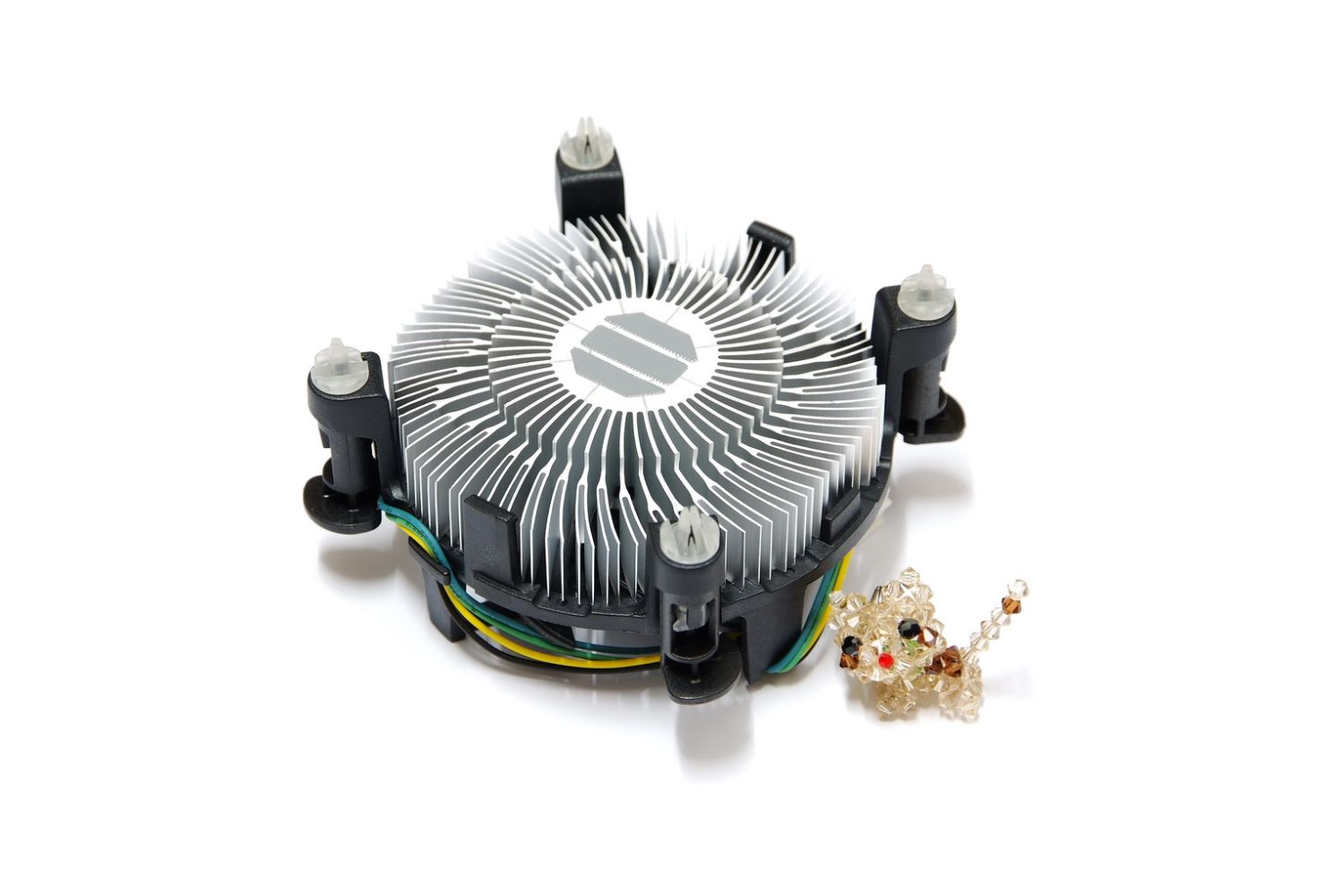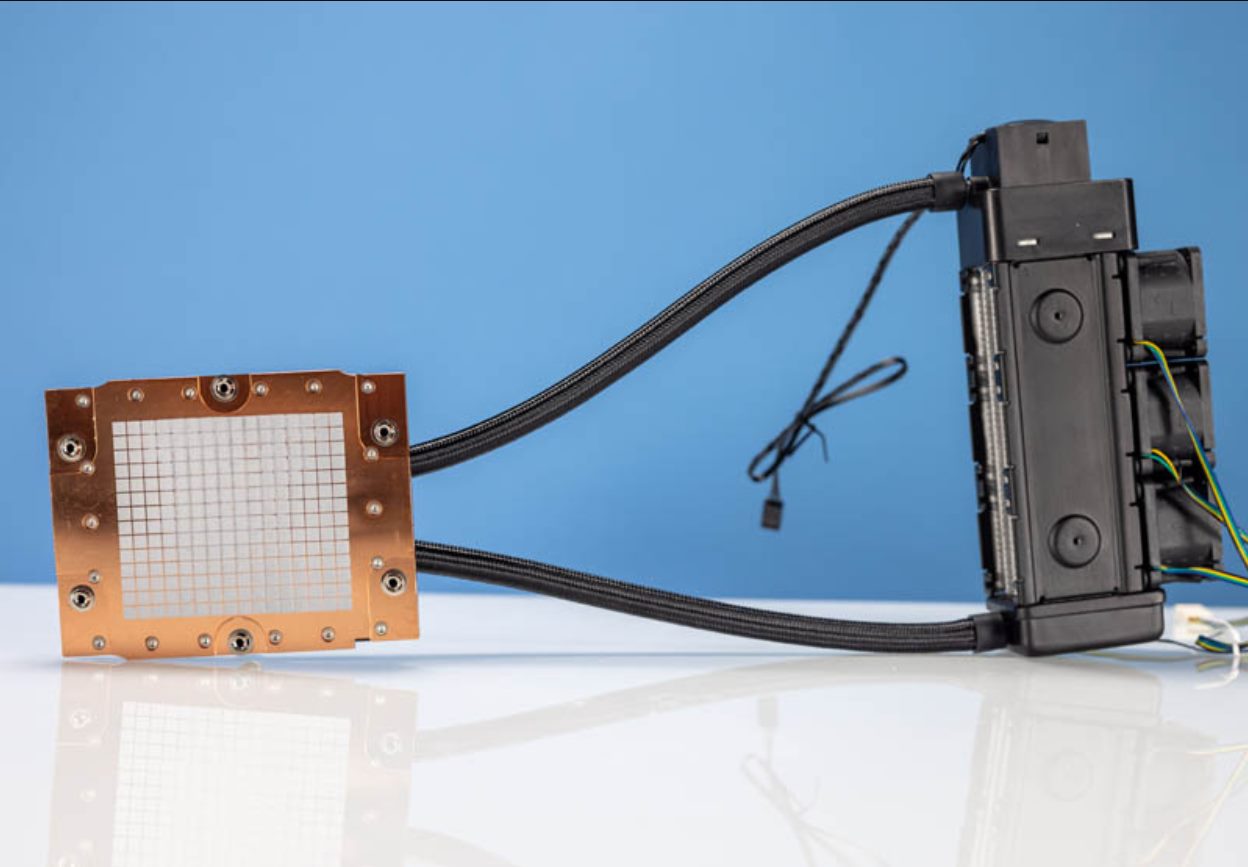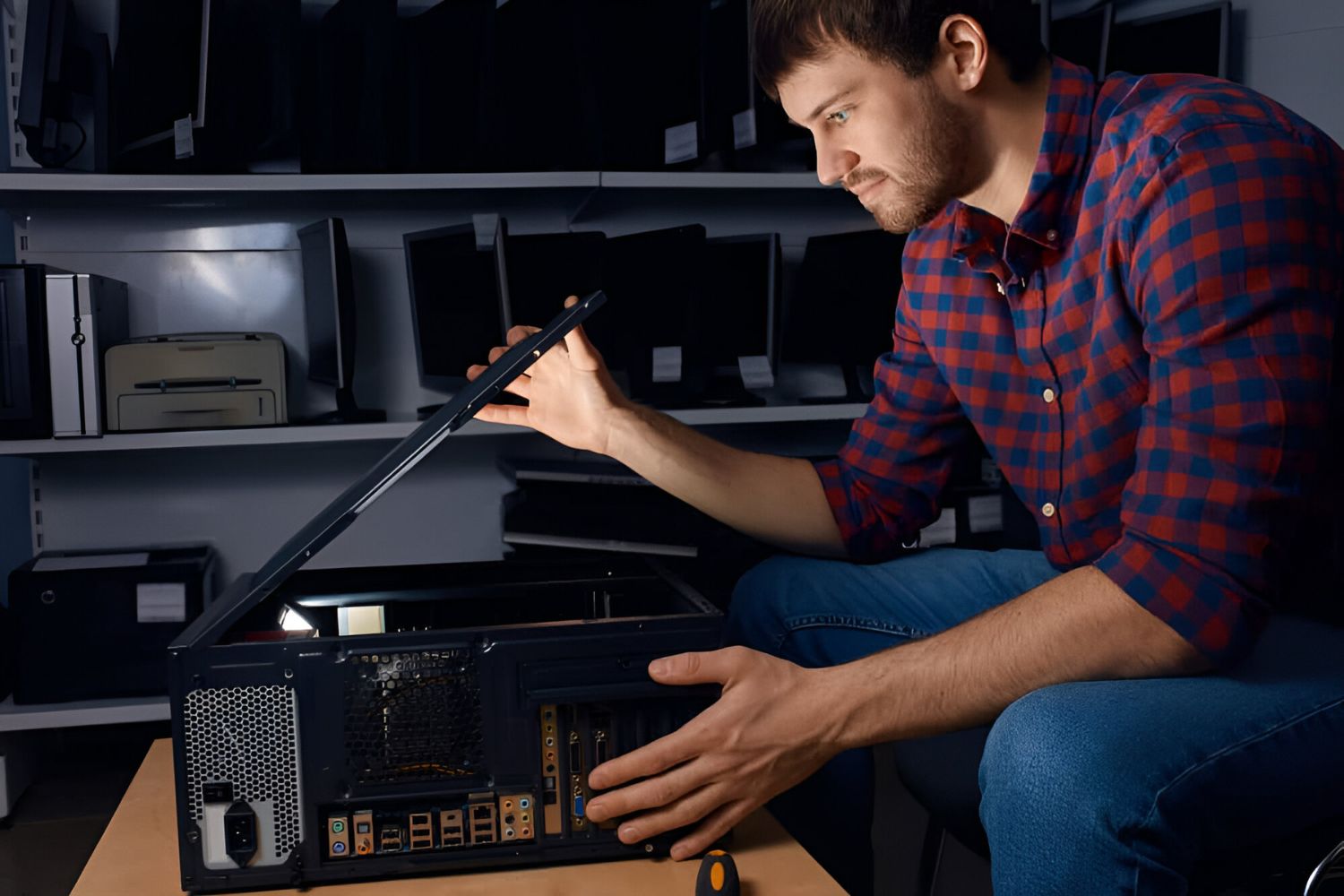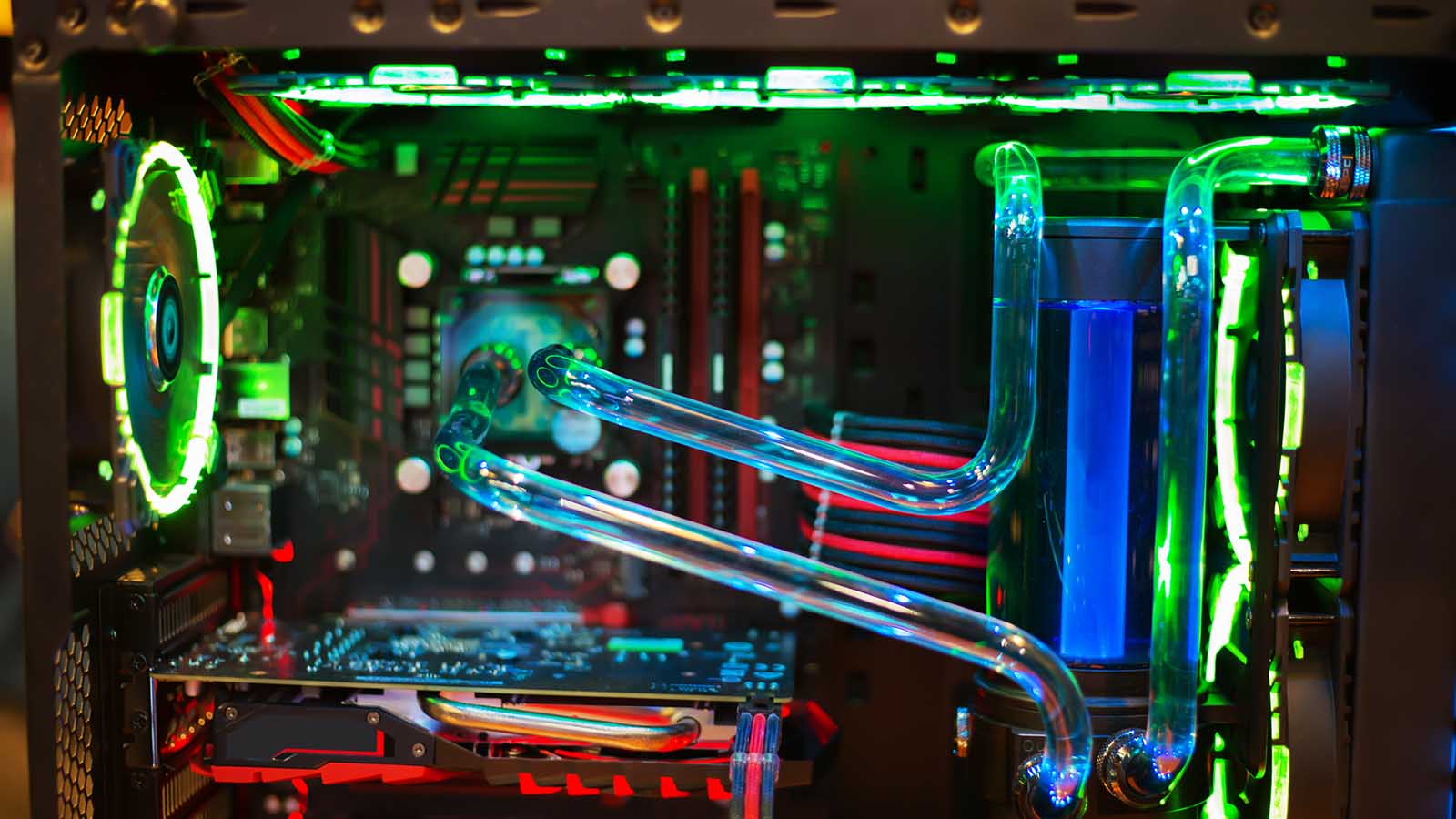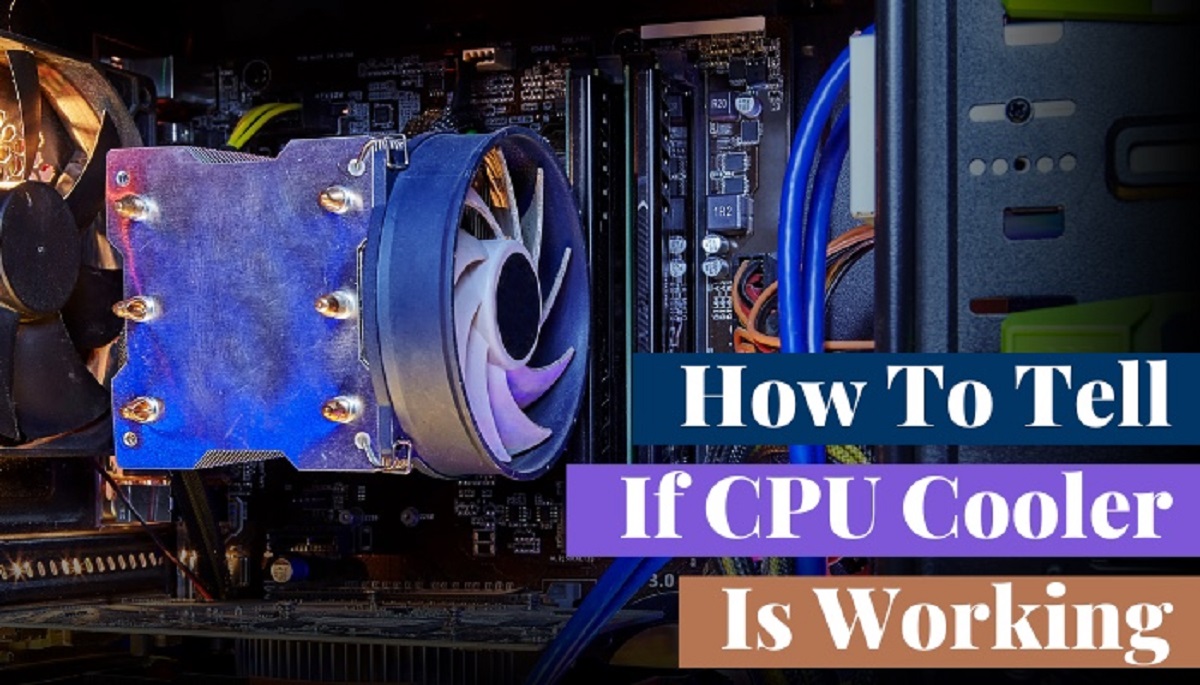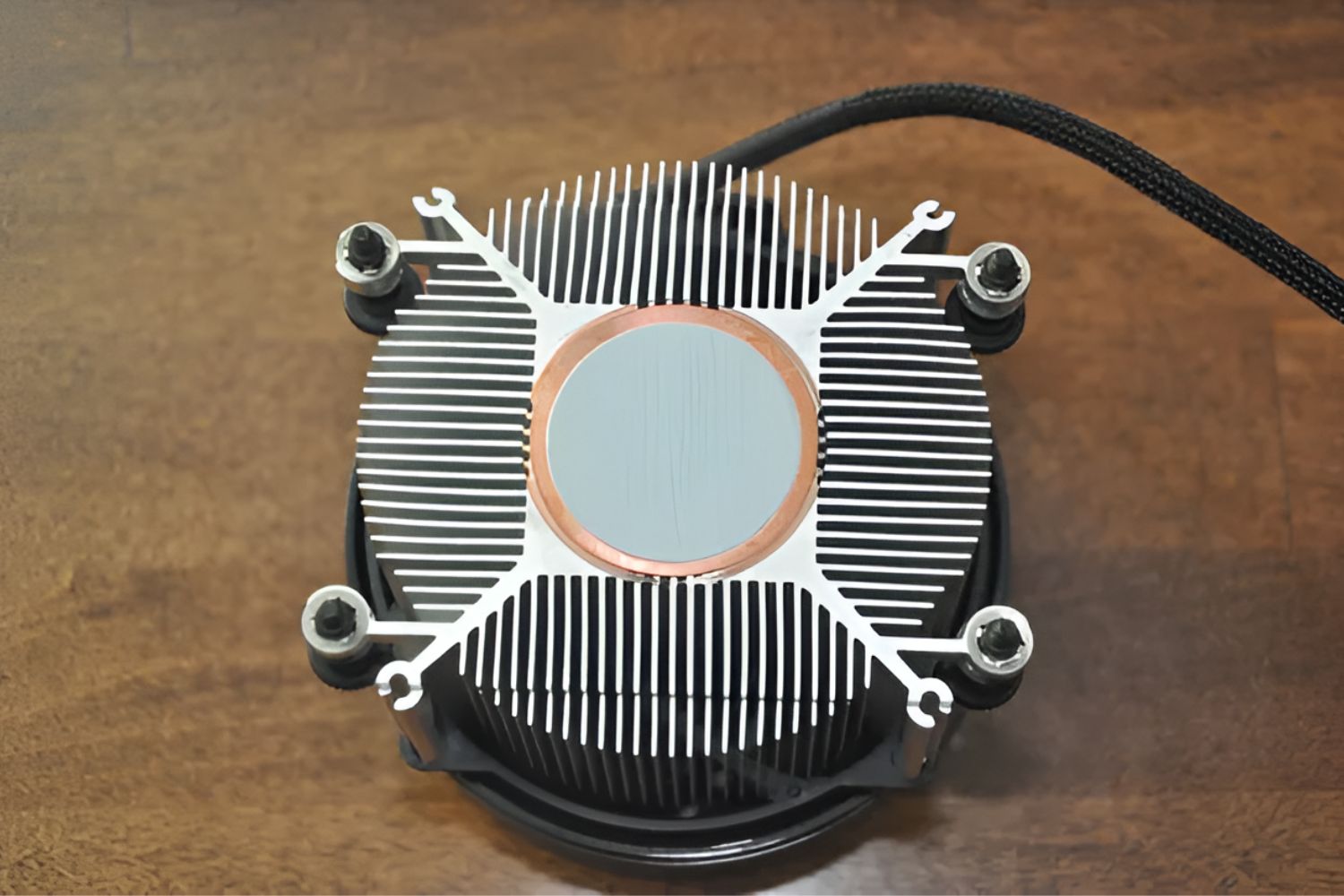Introduction
When building or upgrading a computer, one crucial aspect to consider is the compatibility of the CPU cooler with the case. The CPU cooler plays a vital role in keeping the processor temperature in check, ensuring optimal performance and preventing damage due to overheating. However, not all CPU coolers are designed to fit every case, leading to potential issues if compatibility is overlooked.
Understanding how to determine if a CPU cooler will fit your case is essential to avoid costly mistakes and ensure a successful build. In this article, we will explore the key factors to consider when checking for CPU cooler compatibility, empowering you to make informed decisions and achieve optimal performance from your system.
We will explore various aspects such as motherboard socket size, CPU cooler height, case clearance, RAM clearance, fan size and location, and other essential considerations. By understanding how these factors impact compatibility, you will be able to select a CPU cooler that perfectly matches your case and meets your cooling needs.
So, if you’re ready to dive into the world of CPU cooler compatibility, let’s explore each factor in detail and equip ourselves with the knowledge needed to ensure a seamless fit between the CPU cooler and the case.
Factors to Consider When Checking CPU Cooler Compatibility
When it comes to checking CPU cooler compatibility, there are several key factors that you should take into account. By considering these factors, you can ensure that the CPU cooler you choose will fit perfectly within your case and provide efficient cooling for your processor. Let’s explore these factors in detail:
- Motherboard Socket Size: The first factor to consider is the motherboard socket size. Different CPUs require different socket types, such as LGA 1151, AM4, or TR4. It is essential to ensure that your CPU cooler is compatible with your motherboard’s socket type to ensure a proper fit and secure installation.
- CPU Cooler Height: Another crucial factor to consider is the height of the CPU cooler. Some cases have limited clearance, particularly when it comes to height. Before choosing a CPU cooler, check the maximum CPU cooler height that your case can accommodate. This will prevent any clearance issues with other components like the side panel or RAM modules.
- Case Clearance: Along with the CPU cooler height, it is important to consider the overall case clearance. This includes checking the space and clearance around the CPU socket, as well as the distance between the CPU cooler’s heatsink and other components, such as the RAM or GPU. Insufficient clearance can lead to compatibility issues and hinder proper airflow.
- RAM Clearance: RAM modules with taller heatsinks can sometimes interfere with the installation of CPU coolers, particularly those with large heatsinks or fans. Before selecting a CPU cooler, check the clearance between the cooler and the nearest RAM slot to ensure proper fit and function.
- Fan Size and Location: The size and location of the CPU fan can also impact compatibility. Ensure that there is enough space within the case for the CPU fan to spin freely without obstruction. Consider the fan’s dimensions and the available clearance around it to avoid any conflicts with other components.
- Other Considerations for Compatibility: Additionally, consider other compatibility factors, such as the presence of liquid cooling systems, mounting options (top, front, or rear), and the compatibility of the CPU cooler’s mounting bracket with your case. These factors can affect the installation process and overall compatibility.
By considering these factors, you can ensure that the CPU cooler you select is compatible with your case, motherboard, and other system components. Taking the time to verify compatibility will help you avoid any issues during installation and optimize the cooling performance of your CPU.
Motherboard Socket Size
When it comes to CPU cooler compatibility, one of the fundamental factors to consider is the motherboard socket size. The socket size determines the physical dimensions and layout of the CPU socket on your motherboard, which in turn dictates the type of CPU cooler that can be installed.
Popular socket types include LGA (Land Grid Array) for Intel processors and AM (Advanced Micro) for AMD processors. Each socket type has specific dimensions and arrangements of pins or lands, which are crucial for establishing a stable connection between the CPU and the motherboard.
Before choosing a CPU cooler, it is essential to ensure that it is compatible with your motherboard’s socket type. Most CPU coolers will clearly state the supported socket types in their specifications. You can also consult your motherboard’s manual or manufacturer’s website to identify the socket type.
When checking for socket compatibility, keep in mind that different generations of CPUs within the same socket type may have varying power requirements and physical dimensions. For example, the LGA 1151 socket supports multiple generations of Intel CPUs, including 8th and 9th generation processors. However, due to differences in power delivery or heatsink mounting mechanisms, not all CPU coolers designed for LGA 1151 will fit all generations of CPUs.
Additionally, it is crucial to ensure that the CPU cooler’s mounting mechanism matches the socket’s mounting holes. Some CPU coolers use a backplate or mounting bracket that attaches behind the motherboard to provide stability and secure installation. Make sure that the mounting mechanism aligns with the holes present on your motherboard.
By considering the motherboard socket size, you can ensure that the CPU cooler you choose is compatible with your specific motherboard and CPU. This compatibility guarantees a secure and stable installation and allows for efficient heat transfer from the CPU to the cooler, ensuring optimal cooling performance.
CPU Cooler Height
CPU cooler height is a critical factor to consider when checking compatibility with your case. The height of the CPU cooler refers to the distance from the processor’s surface to the top of the cooler, including any fans or heat sinks attached.
Case manufacturers often specify a maximum CPU cooler height that their cases can accommodate. This specification is crucial because if the CPU cooler is too tall, it may come into contact with other components or the case’s side panel, leading to installation complications and potential damage.
Before choosing a CPU cooler, check the maximum CPU cooler height supported by your case. You can typically find this information in the case’s manual or on the manufacturer’s website. Alternatively, you can measure the available clearance inside your case, ensuring that there is sufficient space for the CPU cooler and any additional fans or components.
In addition to the case clearance, it is essential to consider the height of other components such as RAM modules. Some CPU coolers feature wider heat sinks or fans that may obstruct or interfere with taller RAM modules. To avoid compatibility issues, ensure that there is enough clearance between the CPU cooler and the nearest RAM slot.
It’s worth noting that low-profile CPU coolers are specifically designed for cases with limited clearance. These coolers are generally shorter in height and offer efficient cooling while ensuring compatibility with small form factor cases or cases with height restrictions.
By considering the CPU cooler height along with the case and RAM clearance, you can choose a cooler that not only fits perfectly but also ensures proper airflow and efficient cooling for your processor. Ensuring adequate clearance will help prevent any complications during installation and optimize the overall performance of your system.
Case Clearance
When determining CPU cooler compatibility, it is crucial to consider the overall case clearance. Case clearance refers to the available space within the case, particularly around the CPU socket and the area where the CPU cooler will be installed.
Insufficient clearance can lead to several issues, including restricted airflow, interference with other components, and difficulty in installing or removing the CPU cooler.
One important aspect of case clearance is the space around the CPU socket. Some high-performance CPU coolers come with large heat sinks or multiple fans for improved cooling. Before selecting a CPU cooler, ensure that there is adequate space around the CPU socket to accommodate the cooler.
Additionally, consider the clearance between the CPU cooler’s heat sink or fan and other components within the case. Ensure that there is enough room between the CPU cooler and components such as RAM modules, graphics cards, or power supply units. This will prevent any physical contact or obstruction, ensuring proper functionality and preventing potential damage.
Furthermore, consider the position and layout of other components, such as the GPU or storage drives. In some cases, long graphics cards or multiple storage drives may limit the available space for a larger CPU cooler. It’s essential to check the dimensions and layout of your components to ensure compatibility and proper installation.
Some cases also have specific openings or mounting areas designated for CPU cooler installation. Be sure to check if your case has any such provisions to ensure a secure and proper fit for your CPU cooler.
By considering case clearance, you can ensure that the CPU cooler you choose fits within your case without any interference or compatibility issues. Sufficient clearance allows for adequate airflow and optimal cooling performance, ensuring the longevity and stability of your system.
RAM Clearance
When checking for CPU cooler compatibility, it is essential to consider the clearance between the CPU cooler and your RAM modules. RAM clearance refers to the space between the CPU cooler, specifically its heat sink and fan, and the neighboring RAM modules.
Some CPU coolers, especially those with large heat sinks or fans, can physically obstruct or interfere with taller RAM modules. This can result in compatibility issues, preventing the RAM from being properly installed or causing unwanted pressure on the RAM modules.
Before selecting a CPU cooler, it is crucial to check the RAM clearance specifications of both the cooler and your RAM modules. Most CPU cooler manufacturers provide information on RAM clearance in their product specifications, indicating the maximum height of RAM modules that can be used alongside the cooler.
Measure the height of your RAM modules and compare it with the RAM clearance provided by the CPU cooler manufacturer. The RAM clearance measurement typically accounts for the space required between the top of the RAM module and the bottom of the CPU cooler’s heat sink or fan.
It’s worth noting that some CPU coolers have a modular design, allowing you to adjust the positioning of the heat sink or fan to accommodate taller RAM modules. These coolers provide flexibility in terms of clearance and ensure that you can use RAM modules with taller heat sinks without any compatibility issues.
If you have RAM modules with particularly tall heat sinks and are concerned about clearance, you may consider low-profile RAM modules with smaller or no heat sinks. These modules offer a slimmer profile, minimizing the chances of interference with the CPU cooler.
By considering RAM clearance, you will ensure that the CPU cooler you choose is compatible with your RAM modules. This compatibility guarantees that you can install and use both components simultaneously without any physical obstruction or pressure, ensuring smooth operation and optimal cooling performance.
Fan Size and Location
When examining CPU cooler compatibility, it is crucial to consider the fan size and location. The fan plays a significant role in cooling the CPU by redirecting heat away from the heat sink and dissipating it into the surrounding environment.
The size of the fan can impact compatibility with your case and other components. Common fan sizes include 120mm, 140mm, and 200mm, although other sizes are also available. Before selecting a CPU cooler, ensure that the fan size is compatible with your case’s fan mounts and available space.
Check the specifications of your case to determine the maximum fan size that it can accommodate. This information is typically found in the case manual or on the manufacturer’s website. If your case has pre-installed fans, measure their size to ensure compatibility with the CPU cooler you intend to use. It is also essential to consider the space around the CPU socket and the surrounding components to guarantee that the fan will fit properly.
In addition to fan size, consider the fan’s location on the CPU cooler. Some CPU coolers have fans located in a horizontal or vertical orientation, while others may have dual fans in a push-pull configuration. The arrangement and positioning of the fan(s) can impact compatibility, particularly with other components like RAM modules, graphics cards, or VRM heatsinks.
Take into account the dimensions and location of these components when selecting a CPU cooler. Ensure that the fan(s) will fit within the available space and not interfere with other components or obstruct airflow. Some CPU coolers offer adjustable fan positions or removable fan clips to provide more flexibility in terms of compatibility.
Consider the direction of airflow as well. Some CPU coolers are designed to provide downward airflow towards the motherboard’s VRM section, while others provide front-to-back or back-to-front airflow. Choose a CPU cooler that aligns with your case’s airflow design for optimal cooling efficiency.
By considering fan size and location, you can ensure that the CPU cooler you choose fits within your case and provides efficient cooling without obstructing other components. Compatibility in terms of fan size and location allows for proper airflow to keep your CPU cool and maximize its performance.
Other Considerations for Compatibility
While motherboard socket size, CPU cooler height, case clearance, RAM clearance, and fan size and location are the primary factors to consider when checking CPU cooler compatibility, there are a few additional considerations to keep in mind. These factors can impact the overall compatibility of your chosen CPU cooler with your case and other system components:
Liquid Cooling Systems: If you have a liquid cooling system, such as an all-in-one (AIO) or custom loop, it is important to ensure that the CPU cooler is compatible with your existing setup. Check for compatibility with radiator sizes, tubing lengths and diameters, and pump and reservoir configurations.
Mounting Options: Consider the mounting options available in your case for installing the CPU cooler. Some cases have mounting brackets or provisions for top, front, or rear CPU cooler installation. Make sure that the CPU cooler’s mounting mechanism aligns with these options to ensure a secure and proper fit.
CPU Cooler Mounting Bracket: Some CPU coolers require a specific mounting bracket for installation. Ensure that the mounting bracket provided with the CPU cooler is compatible with your case and motherboard. If not, you may need to purchase a separate mounting bracket or choose a different CPU cooler that supports your existing bracket.
Overclocking and Power Consumption: If you plan to overclock your CPU or if you have a high-performance processor with a high TDP (thermal design power), consider the CPU cooler’s capacity to handle the increased heat generated by these scenarios. Opt for a CPU cooler that offers higher cooling performance and has a higher TDP rating to ensure efficient cooling under demanding conditions.
Manufacturer Recommendations: Check the CPU cooler compatibility recommendations provided by your CPU or motherboard manufacturer. They often provide a list of recommended CPU coolers that have been tested and proven to work well with their products.
Budget and Aesthetic Preferences: While compatibility is essential, consider your budget and aesthetic preferences as well. There is a wide range of CPU coolers available, offering different features, designs, and price points. Choose a CPU cooler that fits within your budget and matches the aesthetic style you desire for your system.
By considering these additional compatibility factors, you can ensure a seamless fit between the CPU cooler and your case, motherboard, and other system components. These considerations help to optimize cooling performance, ensure system stability, and align with your specific requirements and preferences.
Conclusion
Ensuring CPU cooler compatibility is essential for a successful computer build or upgrade. By considering factors such as motherboard socket size, CPU cooler height, case clearance, RAM clearance, fan size and location, and other compatibility considerations, you can avoid compatibility issues and ensure optimal cooling performance.
When determining CPU cooler compatibility, verify that the cooler is compatible with your motherboard’s socket type to ensure a secure and stable installation. Additionally, check the CPU cooler height and the case clearance to guarantee a proper fit and prevent any interference with other components or the case’s side panel.
RAM clearance is another critical factor to consider, as some CPU coolers may obstruct taller RAM modules. Checking clearance specifications ensures that the CPU cooler and RAM modules can coexist without any compatibility issues.
Don’t forget to consider fan size and location to ensure compatibility with your case’s fan mounts and proper airflow within your system. Additionally, other factors, such as liquid cooling system compatibility, mounting options, CPU cooler mounting brackets, overclocking capabilities, and power consumption, should be taken into account for a comprehensive assessment of CPU cooler compatibility.
By carefully evaluating these factors and taking into account manufacturer recommendations, budget constraints, and aesthetic preferences, you can select a CPU cooler that not only fits your case but also meets your cooling requirements and aligns with your personal preferences.
Remember, compatibility is critical to ensure optimal cooling performance, maintain system stability, and protect your valuable components from heat-related issues. With the knowledge gained from understanding CPU cooler compatibility, you can make informed decisions and create a high-performing and reliable computer system.







